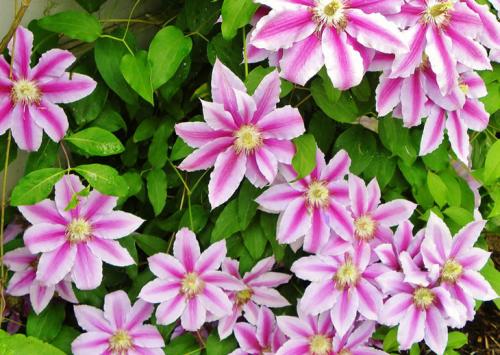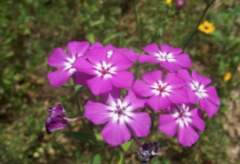What plant is clematis? Introduction of culture methods and matters needing attention of clematis
Clematis is a spectacular flowering vine. They are original front yard vines, usually planted at the bottom of lampposts on front trails to mark a dedicated gardener's home in full bloom.
Gardeners have admired and cultivated clematis since at least the 16th century, and more than 2500 hybrid varieties have been developed. They thrive in sunny gardens, although pale flower varieties, such as Will Goodwin, are usually happiest in bright shade. Summer heat, morning sunshine or bright, indirect light is the best choice. Plant them in fertile, well-drained soil rich in compost. Some gardeners cover root plants with broken clay pots; compost around the base serves the same purpose: it helps prevent water loss from the soil and moderates soil temperatures.
Clematis has large flowers up to 9 inches long and is perhaps the most popular variety. The striking Henryi will attract a lot of attention with its huge snow-white bloom; the handsome Jackmani is equally dramatic with velvety purple flowers. Both "Pink Fantasy" and "Angela" are known for their compact habits, only 6-7 feet tall; their charming flowers are four inches wide.
Although they are often trained along fences or on their own posts, Clematis will grow gracefully through shrubs and roses. Some gardeners plant clematis every time they plant roses-in the same hole. Around established roses, place clematis plants a foot or two from the crown and train them onto the roses. Clematis will also climb through hydrangea, abelia, weigra and other shrubs.
As you plant, dig a large hole, at least a foot wide and deep, to create well-drained soil where these flowers thrive. Place the plant in the hole with its crown three to five inches below soil level, place a support stake close to the crown, and fill the well. After the plant is built, you may need to water it every other day. Keep the area around the roots covered with 2 to 4 inches of mulch (compost or shredded leaves work fine).
Clematis vines bloom so much that they can almost hide the plant's leaves. Bloom lasts up to four weeks. In gardens with various clematis, the blooming season may extend from spring to fall. It's a lively program: enjoy the flowers in the garden, and also cut some for the house. Cut the flowers when they are almost open, and you can see them in vases on tables.

- Prev

Pea planting techniques and methods, what are the planting conditions and which stages should be fertilized?
Do you know peas as a vegetable plant? How to grow this kind of vegetable plant? Let's have a look! Pea planting Guide: peas, also known as snow peas, peas, shell peas. Crop rotation group Leguminosae (peas and legumes). Planting introduction: mud
- Next

Drummond's Phlox plants, points for attention in the annual Fulukao planting method in the garden
Annuals add interesting color and drama to the spring and summer gardens. Drummond's Phlox plants also offer intoxicating fragrances and crimson flowers. It is a small, dense plant that can easily grow from seeds under appropriate conditions.
Related
- A course of planting techniques and methods on how to grow carrots
- How to plant the latest tulips?
- Is it better to pick tea in the morning or in the afternoon? When is the best time for tea to be picked? what is the third or fifth tea?
- Launch Yuanxiao Happy combination Haocha + Tea Yuan healthy Taste
- Penghu Tourism "Fireworks 20 Parade with You"
- 2022 West Lake Happiness holds "Digital Revitalization Voucher" and draws iphone13 and laptop.
- Banqiao Fuzhou social houses are designed to change start-up combined with police elimination to create a safe and livable environment
- The convenient measure of "mechanical weeding" in Xinbei has been abused and the Agriculture Bureau has imposed heavy penalties on the illegal land consolidation.
- Changgeng University Joins Hands with Four Memory Factories to Rescue Memory Talent Shortage
- The list of Taiwan's top 100 MVP managers is listed by the Director-General of the Farmers' Association of Sanxia District.

